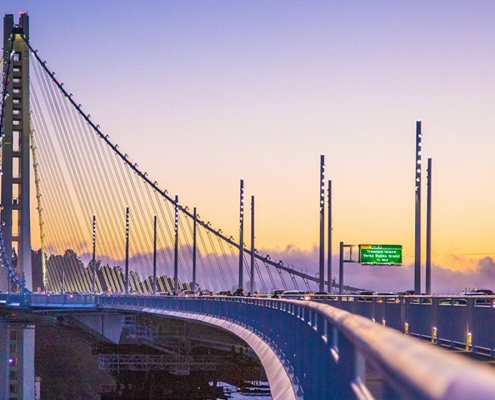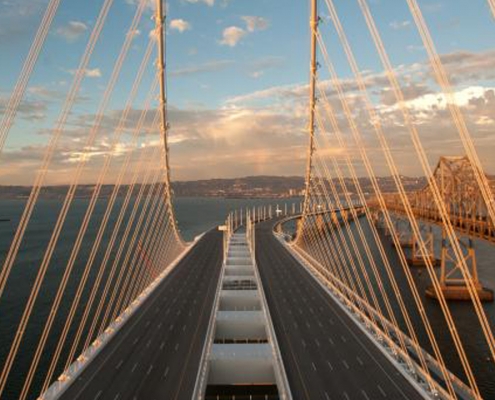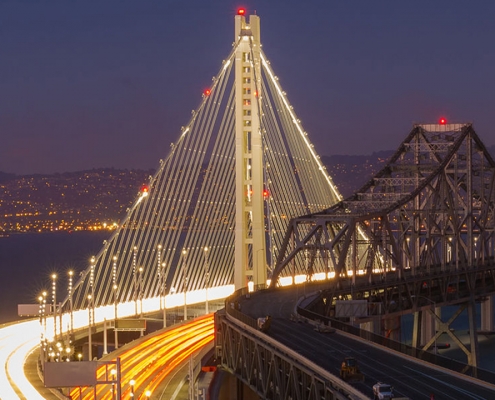Oakland Bay Bridge.
San Francisco, CA, USA
The San Francisco-Oakland Bay Bridge East Span consists of four major components; the signature 385 m single-tower, self-anchored suspension span, the 1.6 mile dual box girder skyway, the 467 m Yerba Buena Island transition structures, and the 406 m Oakland touchdown approach. Complex and varied geological conditions at the bridge site, hazardous seismic conditions, and state-mandated design criteria contributed to the challenges of designing and constructing this landmark lifeline structure.
This self-anchored suspension span is the first single cable suspension span in the world. The main suspension cable is composed of 137 strands with 127 5-mm diameter high strength steel galvanized wire, in each strand, totaling 17,399 wires in the entire cable.
BTC Scope:
The PWS technology for fabrication and erection of the main suspension cable, of the San Francisco-Oakland Bay Bridge, was one of the early applications of in the United States. As a new technology on the first single cable suspension in the world, a mock-up of the PWS strand cable was thought to provide confidence in the technology. BTC provided the design of the mock-up of the cable, which includes a self-supporting frame. SHANGHAI PUJIANG CABLE COMPANY (SPCC), of the P.R. CHINA fabricated the cable mock-up from the same stock of 5-mm diameter wires, which SPCC used to fabricate the San Francisco-Oakland Bay Bridge main suspension cable.
The cable mock-up is under tension, with a total force of 5,782kN. (1.3 million pounds) This applies, on every single wire the level of load comparable to that on a real suspension bridge wire.






